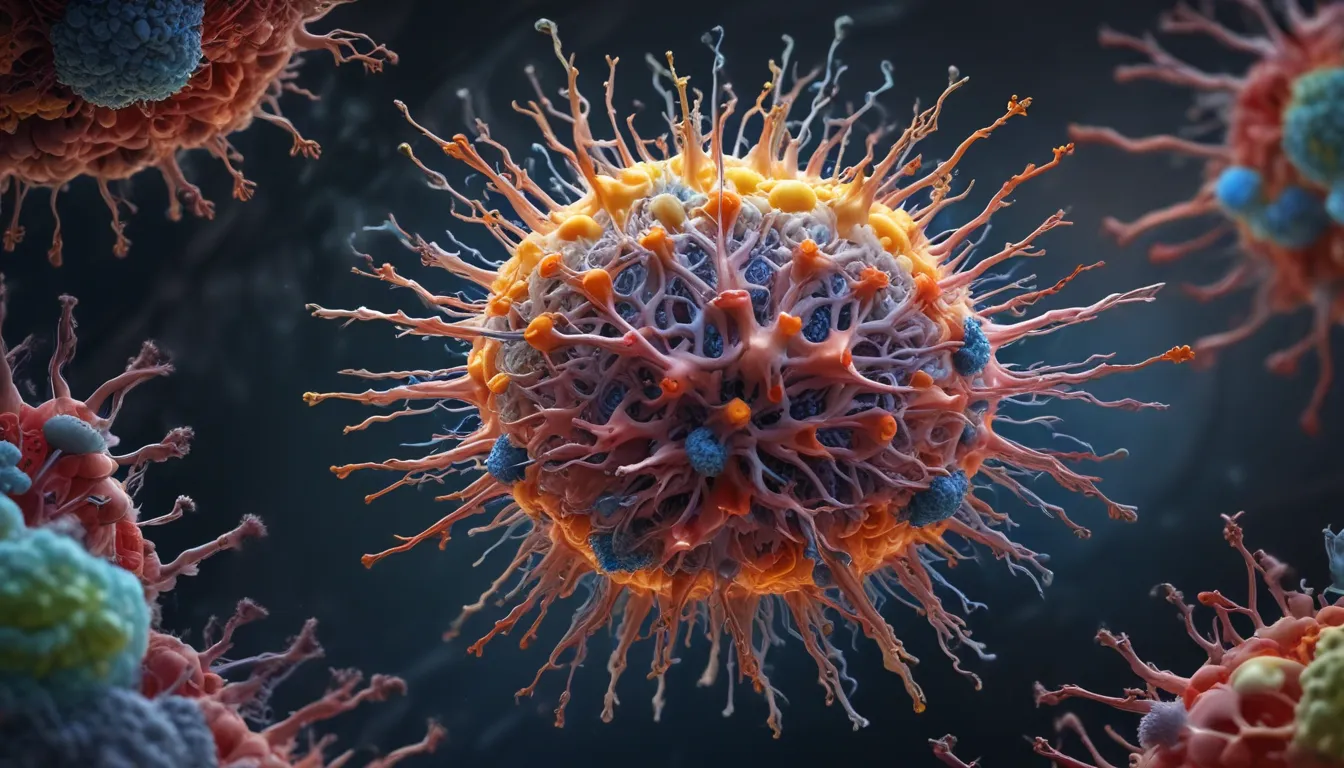A Note About Images: The images used in our articles are for illustration purposes only and may not exactly match the content. They are meant to engage readers, but the text should be relied upon for accurate information.
Welcome to the captivating world of ATP synthase, the tiny but mighty enzyme that serves as the powerhouse of the cell. In this article, we will delve into 19 fascinating facts about ATP synthase that will broaden your knowledge of this essential enzyme and showcase its extraordinary features and functions. From its structure and mechanism of action to its critical role in various biological processes, ATP synthase offers a treasure trove of information that will captivate biology enthusiasts and inquisitive minds alike.
Let’s embark on a journey to unravel the mysteries of ATP synthase and uncover the secrets behind this remarkable enzyme!
Discovering the Enigmatic ATP Synthase
The story of ATP synthase traces back to its discovery by a team of scientists who were investigating the process of oxidative phosphorylation. This complex enzyme was identified as the key player responsible for the production of ATP, the universal energy currency of cells.
Unraveling the Structure of ATP Synthase
ATP synthase is composed of two main regions – the F1 and Fo subunits. The F1 subunit resides in the mitochondrial matrix or the cytoplasm in prokaryotes, while the Fo subunit spans the inner mitochondrial membrane.
The Marvelous ATP Synthesis Process
At the heart of ATP synthase lies its ability to convert ADP and inorganic phosphate into ATP through a process known as oxidative phosphorylation. This enzymatic reaction is essential for energy production in all living organisms.
A Glimpse into the Powerhouse of the Cell
Often hailed as the “powerhouse of the cell,” ATP synthase earns its title by being the primary producer of ATP, the fuel that drives cellular activities and processes.
The Energetic Proton Gradient
The synthesis of ATP by ATP synthase hinges on the presence of a proton gradient across the inner mitochondrial membrane or the bacterial plasma membrane. This gradient is a result of the electron transport chain’s activity.
Unveiling the Rotating Molecular Machine
One of the most captivating features of ATP synthase is its unique molecular machine nature. This enzyme undergoes rotation, with the Fo subunit driving conformational changes in the F1 subunit, ultimately leading to ATP synthesis.
Across Species and Generations
The structure and function of ATP synthase remain highly conserved across diverse species, underscoring its critical role in cellular energy production and metabolism.
ATP Synthase Beyond Cellular Borders
In photosynthetic organisms, ATP synthase extends its reach to the thylakoid membrane, where it contributes to the synthesis of ATP during the light-dependent reactions of photosynthesis.
Facing Inhibitors and Challenges
Certain drugs and toxins have the ability to inhibit ATP synthase, thereby disrupting ATP production and impairing cellular energy metabolism, emphasizing the enzyme’s vulnerability to external influences.
Navigating the Realm of Diseases and Disorders
Malfunctions or mutations in ATP synthase can set the stage for various diseases, including mitochondrial disorders and compromised cellular respiration, shedding light on the enzyme’s pivotal role in maintaining cellular health.
Celebrating the Nanoscale Marvel
As a nanoscale motor, ATP synthase harnesses the flow of protons to generate rotary motion, driving the synthesis of ATP and showcasing the intricacy of cellular machinery.
Energizing Muscle Movement
In the realm of muscle contraction, ATP synthase steps into the spotlight by providing the energy needed for the sliding of actin and myosin filaments, enabling the intricate dance of muscle movement.
Paving the Path to Therapeutic Innovations
ATP synthase inhibitors have emerged as promising candidates in both research and medicine, offering potential avenues for developing anticancer agents that can disrupt energy production in cancer cells.
Navigating the Bacterial World
Bacterial flagella rely on ATP synthase to power their rotation and propel the movement of flagella, enabling bacteria to navigate their environments with agility and precision.
Unveiling the Significance in Evolution
Believed to have appeared early in the course of life’s evolution, ATP synthase played a pivotal role in the development of more complex organisms, leaving an indelible mark on the tapestry of life.
Celebrating Nobel Laureates and Molecular Motors
The groundbreaking discovery of ATP synthase as a molecular motor culminated in the Nobel Prize in Chemistry being awarded to Paul D. Boyer, John E. Walker, and Jens C. Skou in 1997, honoring their contributions to the field of biochemistry.
Setting Sight on Novel Drug Targets
With its indispensable role in energy production, ATP synthase has emerged as a prime target for drug development, offering a promising avenue for the creation of new antibiotics and antifungal agents.
Embracing Diversity in ATP Synthase Variants
Diverse variants of ATP synthase exist across different organisms, including V-ATPase in plants and fungi, and F-type ATP synthase in bacteria and mitochondria, showcasing the enzyme’s versatility and adaptability.
Orchestrating Balance in Cellular Metabolism
The activity of ATP synthase is intricately regulated to maintain a delicate balance between ATP production and utilization, ensuring optimal energy metabolism within cells.
Embarking on a Journey of Exploration
As we bid farewell to our exploration of ATP synthase, we stand in awe of the enzyme’s pivotal role in cellular energy production and metabolism. With each discovery, we deepen our understanding of the intricacies of life at the molecular level, paving the way for future innovations and breakthroughs.
FAQs About ATP Synthase:
- What is ATP synthase?
-
ATP synthase is a complex enzyme found in cell membranes that plays a central role in the production of ATP, the energy molecule used by cells.
-
How does ATP synthase work?
-
ATP synthase utilizes the energy from a proton gradient across the cell membrane to catalyze the synthesis of ATP. It consists of a rotor and a catalytic head that work in tandem to convert ADP and inorganic phosphate into ATP.
-
Where is ATP synthase found?
-
ATP synthase is located in various cellular compartments, including the inner membrane of mitochondria in eukaryotic cells and the plasma membrane of bacteria and archaea.
-
What is the importance of ATP synthase in cellular metabolism?
-
ATP synthase is crucial for converting the energy stored in a proton gradient into the chemical energy of ATP, a process essential for cellular respiration and the generation of ATP for cellular processes.
-
Can ATP synthase be targeted by drugs?
- Due to its vital role in energy production, ATP synthase has emerged as a potential target for drug development. Inhibiting ATP synthase activity holds promise for treating diseases such as cancer and microbial infections.
Embark on a journey into the captivating realm of cellular biology, exploring the marvels of ATP synthase and its integral role in powering the machinery of life. Delve deeper into the wonders of biochemistry, unravel the mysteries of mitochondria, and witness the intricate dance of energy metabolism that sustains our cellular existence.
As we navigate the intricate world of cellular biology and delve into the wonders of ATP synthase, our dedication to delivering reliable and engaging content remains unwavering. Each fact presented on our site stems from real users like you, contributing a wealth of diverse knowledge and insights. Our commitment to accuracy and credibility is upheld by our diligent editors, ensuring that the information we share is not only fascinating but also trustworthy. Explore, learn, and trust in our dedication to quality and authenticity as we unlock the complexities of the biological world together.






